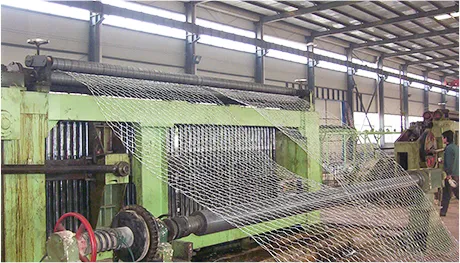-
 Phone:
Phone: -
 Email:
Email:

rockfall netting
The Importance of Rockfall Netting in Landslide Mitigation
Rockfalls are a significant geological hazard that poses risks to infrastructure, ecosystems, and human lives. They are often triggered by natural events such as heavy rainfall, earthquakes, or freeze-thaw cycles, which disturb the stability of rock formations. To mitigate the dangers associated with rockfalls, effective engineering solutions are imperative. One such solution is rockfall netting, an innovative method used to secure rocky slopes and protect vulnerable areas below.
What is Rockfall Netting?
Rockfall netting refers to the use of specialized nets designed to catch and contain falling rocks from steep slopes and cliffs. These nets are typically made of high-strength materials such as steel wire, offering durability and resilience against harsh weather conditions and the weight of falling rocks. Rockfall netting systems can be customized to fit the specific needs of a site, taking into account variables such as rock size, slope angle, and potential fall distances.
How Does It Work?
The primary purpose of rockfall netting is to intercept falling rocks before they reach populated areas, roads, or other vital infrastructure. When a rock falls, it exerts a significant amount of kinetic energy as it descends. Rockfall nets are designed to absorb this energy, stopping the rock from gaining momentum and preventing it from causing damage or injury.
The installation of these nets typically takes place on slopes where previous rockfalls have occurred or where geological surveys indicate a high risk of such events. The nets are anchored securely to the ground or the rock face using anchors and tensioning systems, ensuring they can withstand the forces generated by falling debris.
rockfall netting

Benefits of Rockfall Netting
1. Safety The primary benefit of rockfall netting is enhanced safety for people and infrastructure. By containing potential rockfall events, these nets reduce the risk of injuries and fatalities, as well as damage to vehicles and buildings.
2. Cost-Effectiveness Compared to other stabilization methods, such as rock bolting or retaining walls, rockfall netting is a more cost-effective solution. Its installation can often be completed quickly, which minimizes disruption to traffic and local communities.
3. Minimal Environmental Impact Installing rockfall netting has a lower environmental footprint compared to more invasive stabilization techniques. The netting can be integrated into the landscape without causing significant damage to surrounding habitats or disrupting local ecosystems.
4. Aesthetic Appeal Modern rockfall netting can blend well with natural environments. Advances in design have allowed for a range of colors and styles, enabling them to harmonize with the landscape while serving their critical safety function.
Conclusion
As urban development continues to encroach upon mountainous and rocky landscapes, the need for effective rockfall mitigation measures becomes increasingly vital. Rockfall netting stands out as a proactive, reliable, and environmentally sensitive solution to a persistent geological menace. By investing in rockfall netting, communities can safeguard their citizens, infrastructure, and ecosystems from the unpredictable nature of rockfalls. As technology and materials continue to improve, the future of rockfall mitigation looks promising, ensuring safer environments for all.
-
Wire Mesh for Every Need: A Practical SolutionNewsJul.25,2025
-
Steel Fences: Durable, Secure, and Stylish OptionsNewsJul.25,2025
-
Roll Top Fencing: A Smart Solution for Safety and SecurityNewsJul.25,2025
-
Cattle Farm Fencing Solutions for Maximum SecurityNewsJul.25,2025
-
Affordable Iron Binding Wire SolutionsNewsJul.25,2025
-
Affordable Galvanized Wire SolutionsNewsJul.25,2025
-
Wire Hanger Recycling IdeasNewsJul.25,2025








